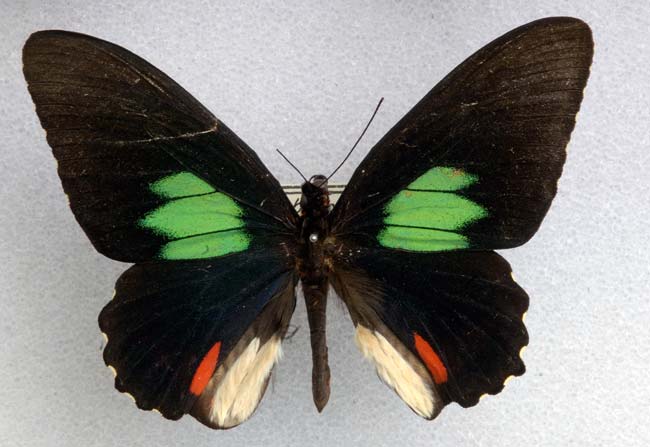Source of Shimmering Butterfly Wing Colors Revealed

The rich, shimmering colors of some butterfly wings are produced not by pigments, but by a special geometric formation of cells, a new study suggests.
Researchers used an X-ray scattering technique to image the wings from two groups of butterflies – the lycaenid and papilionid families – in 3-D. They found the wings contain tiny structures called gyroids that diffract sunlight like a crystal.
"There's been a lot of interest in how these butterfly colors work, but until now all the work was done using two-dimensional electron microscope images, and these are complex three-dimensional structures," said lead researcher Vinodkumar Saranathan, a graduate student working with biologist Richard Prum at Yale University in New Haven, Conn. "We were able to show conclusively that these were indeed gyroids."
A gyroid is shaped like a stack of boomerangs, each with three blades, that are oriented in alternating directions. The result resembles a fan or a pinwheel. A double gyroid is a special type of layered gyroid.
"The double gyroid is found in a lot of synthetic and biological systems," Saranathan told LiveScience. "It is found within specialized compartments of both plant and animal cells that have evolved over millions of years of selection for optimal function."
While double gyroids are common in nature, the butterflies modify these into unique single gyroid structures, which allow all wavelengths of light to pass through except for one, which reflects.
"The size of the gyroid structure is what determines the color," Saranathan explained. "If you were to shrink the structure it would become bluer, if you were to expand it, it would turn red. You can finely tune the color you want."
Sign up for the Live Science daily newsletter now
Get the world’s most fascinating discoveries delivered straight to your inbox.
Because of this ability, single gyroids are attractive for use in optics and even in solar energy technology. They are able to create a color that stays true over time and doesn't fade like a pigment color would.
"In polymer-based photonic crystal engineering the Holy Grail is to produce a material that has a single gyroid structure," Saranathan said. "Butterflies have been doing it for millions of years. We can use this material in the butterflies as a template to manufacture these single gyroids."
The researchers detail their findings in the June 15 issue of the journal Proceedings of the National Academy of Sciences.











